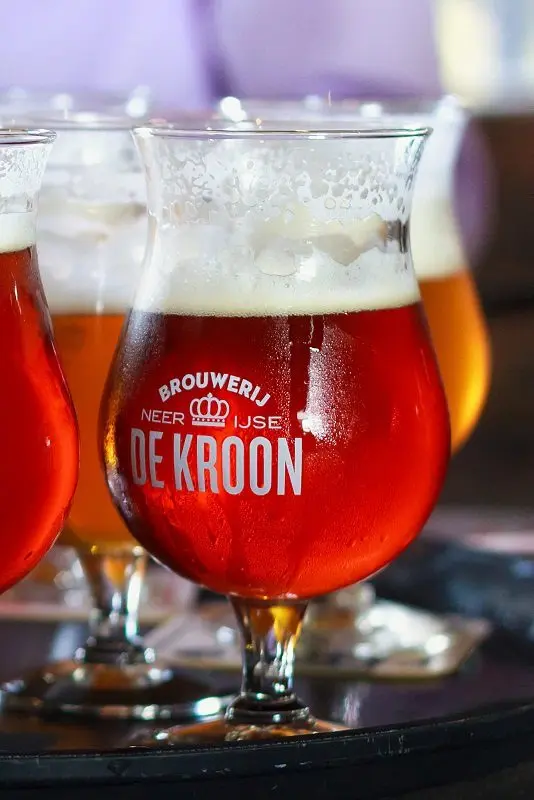Historic style of West Flanders. Beer is aged in oak for up to two years, the final product is made by blending several batches of different ages. It has a complex and deep bouquet, often even compared with Burgundy wine, which is facilitated by the rich red color of the drink. One of the characteristic features of the style is high attenuation, reaching up to 98%.
The aroma is dominated by fruit tones and a malt profile, cherries, red currants, oranges, plums are especially clearly felt, vanilla and chocolate flavors, light nuances of spices can be found. The hops are not noticeable, but appear with a restrained bitterness, the acetic acid is contrary to the style standards. The finish is vinous, sweetish.
Ale has a deep red color, but in the glass it forms an almost snow-white foam. Flemish red ale does not belong to the category of fizzy alcohol, carbonation is very moderate. Despite the medium body, it is easy to drink, thanks to the sour profile it is very refreshing.
The basis of the grist is Vienna malt (can be replaced by Munich), there are special varieties for color, some producers add up to 20% corn. Hops are required continental, fermentation takes place with the help of not only Brettanomyces yeast, but also lactobacilli.
Differs from its Flemish Brown Ale cousin by having a less pronounced malt profile and a more intense fruity aroma.

Strength: 4.6-6.5%.
Density: initial 1.048-1.057, final 1.002-1.012.
Bitterness Index: 10-25 IBU.
Color: 10-16 SRM.









